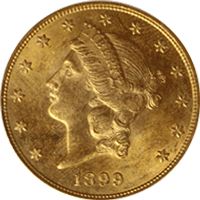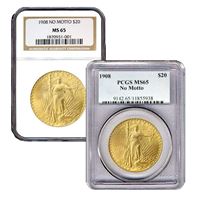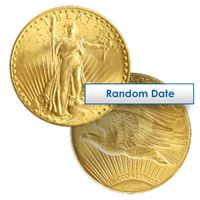Other Pre 1933 US Gold
- Gold
- Silver
- Platinum
- Palladium
- 1 gram
- 2.5 gram
- 5 gram
- 10 gram
- 50 gram
- 100 gram
- 250 gram
- 1/20 oz
- 1/10 oz
- 1/5 oz
- 1/4 oz
- 1/2 oz
- 1 oz
- 2 oz
- 5 oz
- 10 oz
- 20 oz
- 50 oz
- 100 oz
- 1/2 kilo
- 1 kilo
- 5 kilo
- 10 kilo
- Gold
- Pre 1933 Gold
- All Pre 1933 US Gold
- $20 St. Gaudens Gold
- $20 St. Gaudens Gold Certified
- $20 Liberty Gold
- $20 Liberty Gold Certified
- $10 Liberty Gold Coins
- $10 Liberty Gold Certified
- $10 Indian Gold Coins
- $10 Indian Head Gold Certified
- $5 Liberty Gold
- $5 Liberty Gold Certified
- $5 Indian Gold Certified
- $2.5 Liberty Gold
- $2.5 Liberty Gold Certified
- $2.5 Indian Gold
- $2.5 Indian Gold Certified
-
Other Pre 1933 US Gold
Other Pre 1933 US Gold
In 1933, President Franklin D. Roosevelt signed Executive Order 6102 into law. This is often known colloquially as the "Gold Confiscation Act" (though it was not an Act of Congress), and it marked the end of circulating gold coins in the United States. The vast majority of these coins were melted down over the next decade and made into gold bars that have supposedly sat idle in the Fort Knox bullion depository in Kentucky ever since. This gold was the basis of the de facto gold standard known as the Bretton Woods system that governed international finance and foreign exchange markets until 1971.
Today, "pre-1933 U.S. gold" describes all of the gold coins produced by the U.S. Mint prior to this presidential decree. In addition to the $20 Liberty double eagle and the $20 Saint-Gaudens double eagle, the United States minted several other gold coins in different denominations: the $10 gold eagle, the $5 half eagle, and the $2.50 quarter eagle. In addition, for a short time the Mint also made $4 gold coins known as "Stellas" that were an unsuccessful attempt to increase the use of U.S. gold in international trade. The mint also struck $3 gold coins and even tiny gold dollar coins for a brief time during the 1800s.
Unlike the commemorative gold coins produced by the U.S. Mint today, these long-forgotten denominations of gold coins were intended to be used as real money. The weight of their gold content made them intrinsically valuable. Compare this to a paper banknote or a number on an electronic ledger, which only stand in for and represent an amount of money, but are backed by nothing tangible.
Few people today are old enough to recall when gold coins were used as legal tender currency and circulated freely around the country. In fact, even at the time when these coins were minted, you were more likely to find a double eagle migrating between bank vaults and customs houses than in the average person's pocket. You could spend a $5 half eagle like any other coin, but more often they were used as gifts for children in their Christmas stockings. More often, everyday commerce was conducted in silver. However, it's interesting to note that for decades, taxes paid to U.S. Customs could not be settled with paper notes and had to be paid in gold coins.
A small number of these coins have survived to contemporary times. Gainesville Coins' selection of pre-1933 U.S. gold includes Christian Gobrecht's Liberty Head design, Bela Lyon Pratt's incuse Indian Head motif, and Augustus Saint-Gaudens' Indian Head design for the $10 eagle. Saint-Gaudens also created the famous design of Lady Liberty that appears on the $20 double eagle and bears his name. Each of these 90% gold coins carry the lost legacy of U.S. gold coins with them. They hark back to a time when gold specie was used as legal tender. Browse our selection of pre-1933 U.S. gold and make one of these rare, collectible coins your own!












